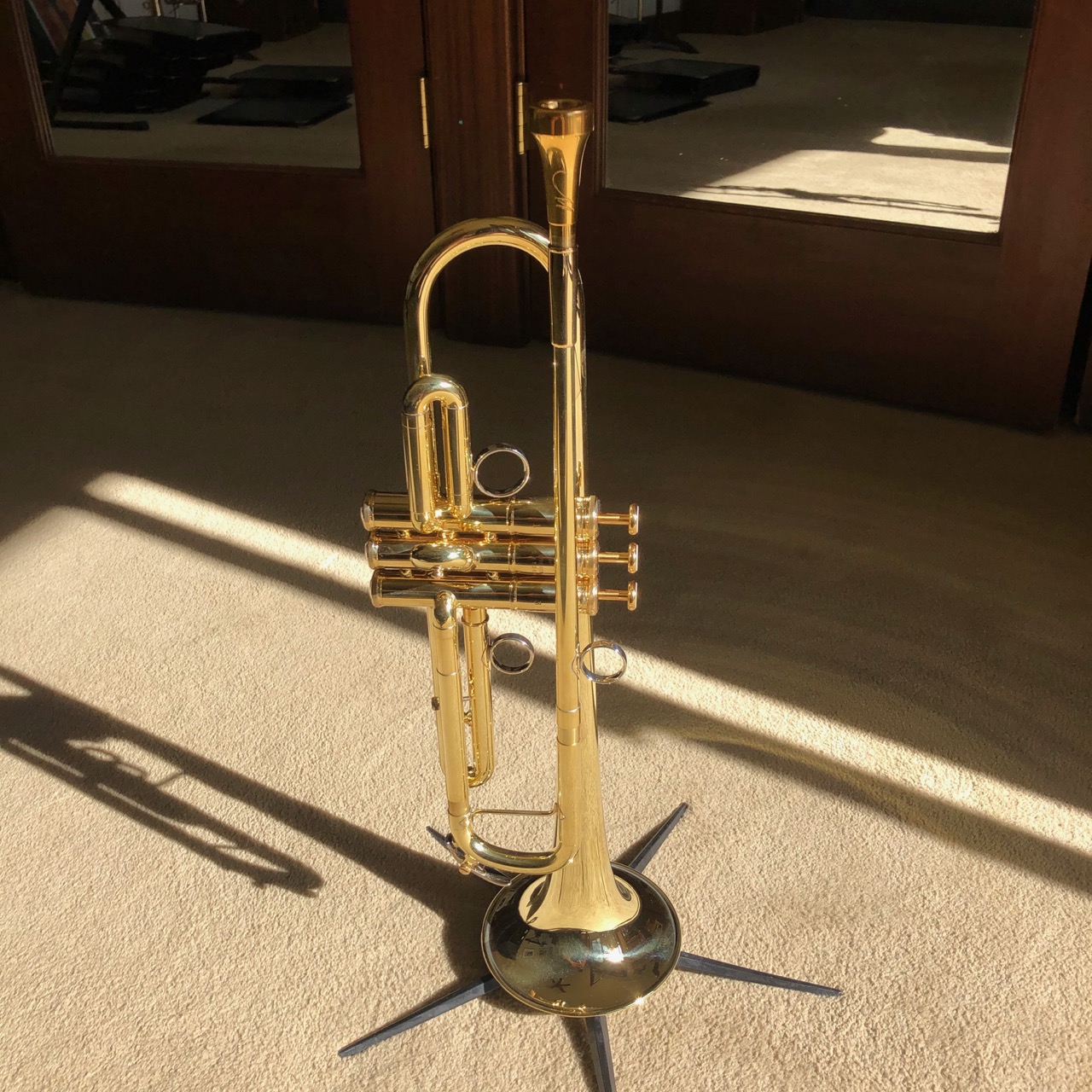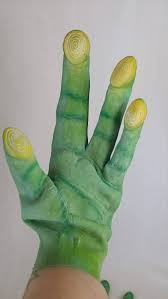Yamaha Miyashiro with red rot
-
I bought my Miyashiro model from a friend who bought it virtually new in 2017. It’s my daily horn, the one I play with the big band. During a recent cleaning I noticed a deposit in the lead pipe which I couldn’t clean out with my flex brush. A few days later I noticed the tell-tale signs of red rot on the outside of the lead pipe, just opposite the deposit.
I’m surprised that this has manifested so early in the horn’s life. I’ve never had a horn with red rot in my entire life, and all of the other horns in my closet are extremely old. The horn has been exceptionally well cared for, and not subjected to any circumstances that I can think of which would contribute to this condition. A friend told me that this was known to be an occasional problem with these horns, but again, I’m surprised.
I’ve contacted my local Yamaha reseller to see about ordering a replacement lead pipe. The lead pipe is still air tight and it likely has a lot of life left in it, but I love the horn and want to make sure I can get a replacement while they’re available.
In the mean time I guess I’ll have to play my Committee. Boo boo. = )
-TJ
-
If it were me, I would contact a Yamaha representative (not salesperson), explain the condition and how unusual it is, and ask for it to be replaced. You want a new lead pipe but maybe starting with your asking for them to replace it (do the work at their expense) might at least give you a higher negotiating position.
-
@Kehaulani Thanks for the advice. I will see what I can learn.
-TJ
-
One of the processes in manufacture is dipping the horn in Formic acid to soften any excess solder, making it easier to buff away. I don't know if Yamaha do this as they use lead free solder. If the immersion time is too long the Formic acid can challenge yellow brass enough to increase the chances of premature de-zincification (red rot). Speak to a Yamaha rep or contact your nearest Atelier.
-
Thank you for the information and the advice.
-TJ
@Trumpetsplus said in Yamaha Miyashiro with red rot:
One of the processes in manufacture is dipping the horn in Formic acid to soften any excess solder, making it easier to buff away. I don't know if Yamaha do this as they use lead free solder. If the immersion time is too long the Formic acid can challenge yellow brass enough to increase the chances of premature de-zincification (red rot). Speak to a Yamaha rep or contact your nearest Atelier.
-
With regard to my Miyashiro, I’m happy to report that my local shop (the one from which the horn was purchased) has sent the horn to Yamaha to have the lead pipe replaced under warranty.
It will be interesting to see what it looks like when it comes back. I assume they will not re-lacquer the entire horn after the new lead pipe is brazed/soldered on.
-TJ
-
Please let us know the results. It might be interesting. Thanks.
-
By way of an update, Yamaha is still working on my horn but they said that they'd be happy to strip the lacquer off the horn for me and return in it in raw brass. They indicated that there would be no negative side effects from a performance or lifespan perspective so I took them up on the offer. I'll post photos and a ride report when she's back in my hands.
-tj
-
Thanks.
There might be no major effect on it's playability, but doesn't stripping it of the lacquer call for more maintenance than a lacquered horn? -
@Kehaulani sure does, unless you like green hands!
-
@flugelgirl said in Yamaha Miyashiro with red rot:
@Kehaulani sure does, unless you like green hands!
-
My Committee is unlacquered and my hands never turn green after playing it. It only needs maintenance if you want to polish it. I like the oxidized look of brass.
-tj
-
@tjveloce My husband’s French horn is raw brass - his tux shirt sleeves are always green. I have an allergy, and find that if I let the patina build I have more problems with it.
-
@flugelgirl Interesting. Maybe it’s a skin chemistry thing?
-tj
-
@tjveloce NOW we know why some manufacturers of TSOs put white gloves in the cases...!
-
-
@tjveloce said in Yamaha Miyashiro with red rot:
TSO? What is a TSO?
-tj
Trumpet Shaped Object - in other words, cheap trumpet that does not work.
-
-
I got the call. After three months my horn is back and ready for me to pick up. It will be very interesting to play it again because since I dropped it off at the music store last October I have been playing my Committee exclusively.
On our way to NAMM my lead (who also plays a Miyashiro, which also has red rot) and I stopped by Bob Reeves Brass for valve checks/alignments. My Committees valves were of by negative 9 thousands (on the upstroke) on two and 10 thousandths on one. Daniel's Miyashiro was off by nearly thirty thou and as we did not have time to get both horns' valves aligned I let him get his done. I did blow a few notes on his horn and other than the fact it's a silver horn, it felt fairly similar to mine, but after months on the Martin it was quite an experience. I love the sound of my Martin but you definitely have to work harder on it. I will likely return to my Yamaha for the big band ensemble stuff as my skill level dictates that I should use the most efficient horn I can find, and the Yamaha his that.
While they had the horn apart for the lead pipe replacement I asked them to strip the lacquer so I'll likely have the only raw brass Miyashiro in North America. It will also be interesting to see if the quality of the sound changes at all, although again, after 3 months I'm not sure how much of a critical faculty I'll have for such things.
I'll report back tomorrow afternoon!
-tj
-
Following a frustratingly long turn around time for having the lead pipe repair, I got my Miyashiro back last weekend. As I mentioned, I had the lacquer stripped after the repair.

Back home in my studio I sat down and set out to run through my daily routine (Irons Method, Clarke's, running my maj/min/dom7 and blues scales) and after 5 or 10 minutes of getting my chops warm (if not completely ready) I had a realization that I did not expect; I'm working harder to make notes on this than I do on my Committee.
Now, I'm a re-entry player of intermediate skill level, and I'm not enough in tune with my approach to my playing to be aware of how I am changing it to match a given horn. I know that I do, whether it's air support, embouchure, speed and volume of air, or even my posture, but I don't know the details of those details. I know that I can produce pianissimo notes, low in the register, on my Committee with gentle, precise attacks. And even though some of the note transitions (depending on valves used) are sometimes not as effortless as they are on other horns, I know how to manage my air to make them more precise. It was a shock to me that the Yamaha would be harder for me to play than the Committee, but then I felt that way about the Committee when I first got it, following a year of playing the Japanese horn.
I got the Martin out and played some passages back to back on both horns, before returning to the Miyashiro for the rest of my routine. My lead suggested perhaps I had been opening my embouchure up to play the Martin, and that the Yamaha doesn't respond as well to that. I'm not experienced enough to weigh in on that.
I'm not looking for any deep truths or discoveries here. Perhaps the takeaway is simply that within the broad spectrum of trumpet design and playing characteristics, the Committee is probably the one which is the outlier. I don't know that I'd have the same experience if I'd been playing my Benge or Olds for three months and returned to the Yamaha.
We'll see what the coming days and weeks bring.
-tj
